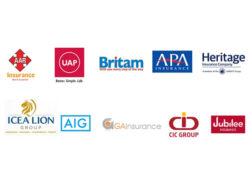
President Uhuru Kenyatta has made achieving Universal Health Coverage by 2022 a major part of his second term agenda. He indicated in his inauguration speech that this would be achieved by expanding coverage under NHIF.
The World Bank estimates that only a fifth of Kenyans have any sort of medical cover, which means that as many as 35 million Kenyans are vulnerable to financial devastation occasioned by a medical emergency.
Illness takes a huge financial toll. As a result, many Kenyans are forced to sell off property, rely on networks of relatives and friends, or even make desperate appeals on social media, to raise the necessary funds.
Kenya’s network of public healthcare facilities is organised on six levels, with the lowest unit being community health workers embedded within communities.
At Level Two, dispensaries and clinics provide the link between community-based healthcare and the formal health system.
Together with Level Three facilities – health centres, maternity clinics and nursing homes – these make up the primary healthcare units.
Levels Four to Six are sub-county, county and national referral hospitals.
It is at the lower levels that the majority of people interact with the healthcare system and it is especially at these facilities that national government interventions on cost mitigation have been most consequential.
According to policy briefs from the Kemri Wellcome Trust Research Programme that examines multiple funding flows to public healthcare facilities in Kenya, the National and County governments need to:
- Improve the infrastructural capacity of public healthcare facilities and human resource for health, medicines and medical equipment.
- Find innovative ways of financing premiums for the poor, elderly, people with disabilities, unemployed and those in the informal sector.
The policy briefs also recommend that NHIF:
- Re-orients its facility selection to create a balance between public and private facilities, and between urban and rural facilities to improve geographical access.
- Engages healthcare providers in determining provider payment rates and makes available information on how the rates are developed. This will improve provider acceptance.
- Educates health workers on the services offered in the benefit package, as they are the gatekeepers of health services.
- Ensures timely reimbursements to healthcare facilities to send the correct incentives for service delivery.
- Invests in fraud minimisation strategies such as verification of provider self-assessment reports, claims and membership. A risk-based approach to sample facilities for physical verification of self-assessment reports and imposition of tough sanctions on providers guilty of fraudulent self-assessment reports, are the best options.
- Harmonises the benefit packages into one package for all members to reduce inequities in access to needed services.
- Simplifies the language used in communication of the benefit packages and adopts communication strategies that reach low-income, less educated, rural population groups, such as visits to homes and public places like markets and places of worship.
- Strengthens monitoring and supervision of healthcare providers and imposes sanctions and rewards for the quality of care provided.
- Reviews its communication and awareness creation strategies to identify mechanisms that are effective in reaching the informal sector, drawing from local immunisation programmes which combine local media messages with community outreach by community health workers.
- Considers introducing partial subsidies that are tax funded to reduce the financial burden imposed by high premium contribution rates on the informal sector.
- Reviews its registration requirements and procedures to reduce the complexity of registration, and the burden of registration rules. In a context where a significant proportion of the informal sector do not have national identity cards and birth certificates, the NHIF could consider using alternative forms of identification, such as referrals from local leaders and local community based organisations.
- Ends delays and unpredictability of claims processing and payments to healthcare facilities, and incorporates client feedback into a quality assessment linked to NHIF provider payment rates. This will encourage healthcare facilities to stop discriminating against NHIF members.
- Aligns its members’ formal benefit package to services available in healthcare facilities by making explicit the benefit package, and implementing a system for monitoring healthcare facilities to ensure that they deliver the formal benefits package.
In 2013, the government abolished all user fees in public dispensaries and health centres and allocated Ksh700 million to the HSSF.
Health is one of the services devolved by the Constitution. This means that while the national government is still responsible for policy and management of Level Five referral facilities, namely the Kenyatta National Hospital and the Moi Teaching and Referral Hospital, the bulk of public healthcare is delivered in facilities run by county governments.
For the first time since independence, residents of historically marginalised counties, such as Lamu and Mandera, now have access to Caesarean section procedures within their counties.
But it is Makueni that stands out as a model to other county governments on how to implement a working public healthcare system.
